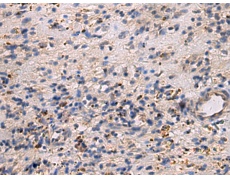中文名称:兔抗COX6A1多克隆抗体
|
Background: |
Cytochrome c oxidase (COX), the terminal enzyme of the mitochondrial respiratory chain, catalyzes the electron transfer from reduced cytochrome c to oxygen. It is a heteromeric complex consisting of 3 catalytic subunits encoded by mitochondrial genes and multiple structural subunits encoded by nuclear genes. The mitochondrially-encoded subunits function in the electron transfer and the nuclear-encoded subunits may function in the regulation and assembly of the complex. This nuclear gene encodes polypeptide 1 (liver isoform) of subunit VIa, and polypeptide 1 is found in all non-muscle tissues. Polypeptide 2 (heart/muscle isoform) of subunit VIa is encoded by a different gene, and is present only in striated muscles. These two polypeptides share 66% amino acid sequence identity. It has been reported that there may be several pseudogenes on chromosomes 1, 6, 7q21, 7q31-32 and 12. However, only one pseudogene (COX6A1P) on chromosome 1p31.1 has been documented. |
|
Applications: |
ELISA, IHC |
|
Name of antibody: |
COX6A1 |
|
Immunogen: |
Synthetic peptide of human COX6A1 |
|
Full name: |
cytochrome c oxidase subunit 6A1 |
|
Synonyms: |
COX6A; CMTRID; COX6AL |
|
SwissProt: |
P12074 |
|
ELISA Recommended dilution: |
5000-10000 |
|
IHC positive control: |
Human brain |
|
IHC Recommend dilution: |
25-50 |

 购物车
购物车 帮助
帮助
 021-54845833/15800441009
021-54845833/15800441009
